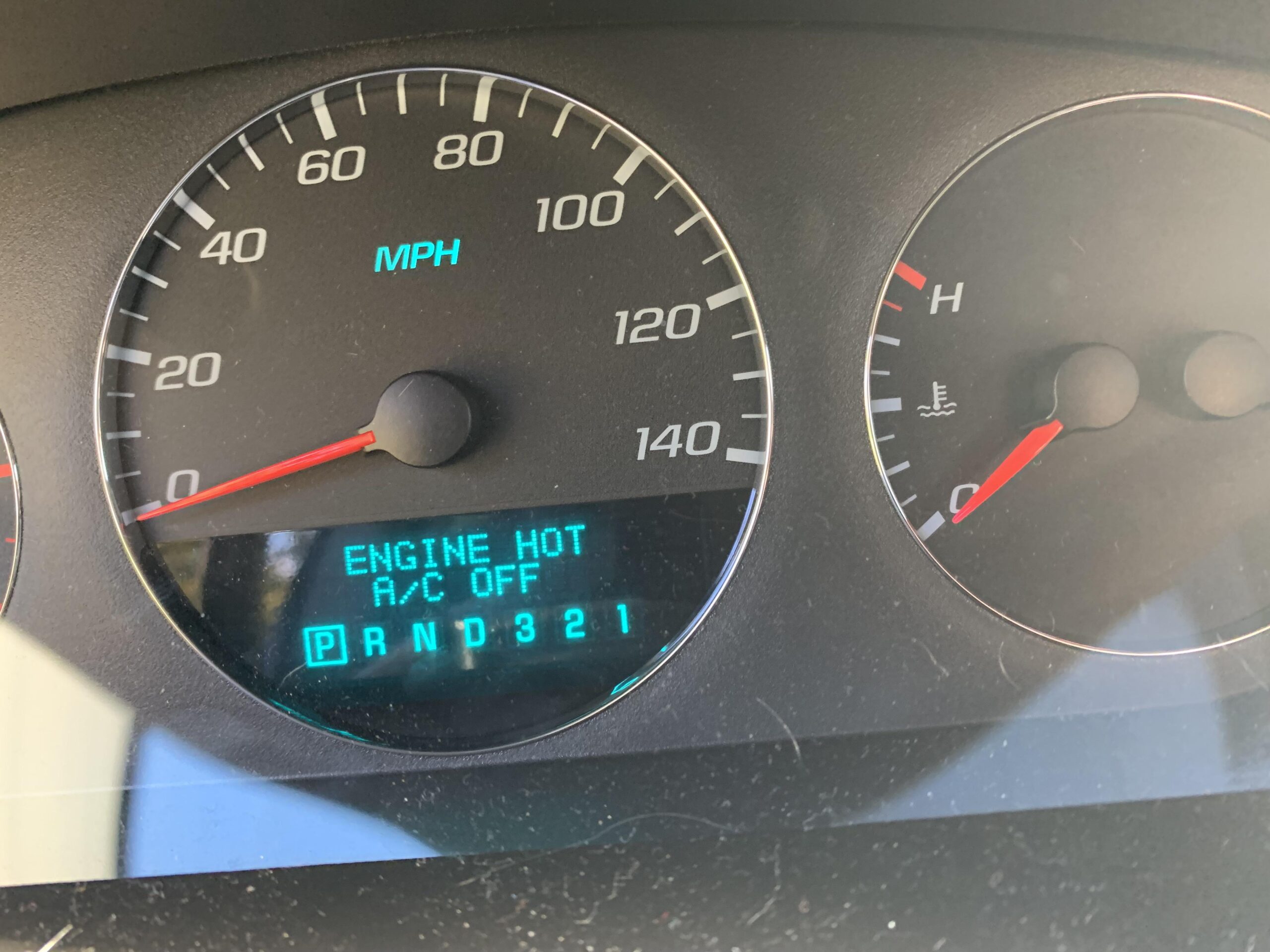Seeing your temperature gauge read hot while the engine feels cool can be confusing. It’s a common issue that leaves many drivers puzzled and worried.
A temperature gauge is a vital part of your car’s dashboard. It tells you if your engine is overheating. But what if it shows a hot reading when the engine seems fine? This situation can indicate a few underlying issues.
The gauge might be faulty, or there could be an issue with the car’s cooling system. Understanding these potential problems can help you avoid unnecessary repairs and keep your car running smoothly. In this blog, we will explore the reasons behind this anomaly and provide insights to help you diagnose and fix the issue. Stay tuned to ensure your car remains in top condition.

Credit: www.reddit.com
Common Causes
A faulty temperature sensor can cause the gauge to show hot. This sensor sends signals to the gauge. If the sensor is broken, the gauge shows wrong readings. Replacing the sensor can fix this issue. Check the sensor for damage or wear.
Wiring issues can also cause the gauge to show hot readings. Loose or damaged wires can affect signals. Check the wires for cuts, breaks, or loose connections. Repairing or replacing the wires can solve the problem. Proper wiring ensures correct readings.

Credit: www.reddit.com
Diagnosing The Problem
The sensor might be faulty. It can send wrong signals. This causes the gauge to show hot. A mechanic can test the sensor. They may use a multimeter. Testing can confirm if the sensor is bad.
Sometimes, dirt or rust affects the sensor. Cleaning it can help. If cleaning does not work, replace it.
Look at the wires connected to the sensor. Wires may be damaged. They can have cuts or wear. Broken wires can give wrong signals too. Check for loose connections as well.
Fix any damaged wires. Tighten loose connections. This can solve the problem. If the issue persists, consult a mechanic.
Testing The Temperature Sensor
You will need a few tools. A multimeter is essential. It helps measure the sensor’s resistance. You also need gloves. Safety first! A wrench is needed to remove the sensor. Have a towel ready for any spills. A small container is useful for catching coolant.
First, let the engine cool down. Then, find the temperature sensor. It’s usually near the thermostat. Use the wrench to remove it. Be careful with the wires. Next, set the multimeter to ohms. Check the sensor’s resistance. Compare it with the car manual. If values don’t match, the sensor might be faulty.

Credit: www.reddit.com
Addressing Wiring Problems
A hot temperature gauge, but a cool engine, may signal wire issues. Inspect wires for damage. Check for frayed or disconnected wires. Look for signs of corrosion. These issues can trick the gauge.
To fix wires, use electrical tape for small damages. Replace severely damaged wires. Always use the right type of wire. Connect wires securely to avoid loose connections. This ensures accurate gauge readings.
Calibrating The Temperature Gauge
Calibration Tools are important for accurate readings. You will need a thermometer, a resistor, and a multimeter. These tools help you measure and adjust the gauge. Make sure all tools are in good condition. This ensures precise calibration.
Calibration Procedure starts by turning off the engine. Connect the thermometer to the engine. Use the resistor to simulate different temperatures. Check the gauge reading. Adjust the gauge if readings are off. Repeat the process until the gauge matches the thermometer. Keep track of all adjustments. Ensure the gauge is accurate before finishing.
Preventive Maintenance Tips
A hot temperature gauge with a cool engine may signal a faulty sensor or wiring issue. Regularly check and clean connections to prevent inaccurate readings. Keep the cooling system well-maintained for reliable performance.
Regular Inspections
Regular inspections help keep your car running well. Check the temperature gauge often. Make sure it reads correctly. Look for any signs of damage or leaks. Check the coolant levels. Ensure all parts are secure. Fix any issues quickly. This prevents bigger problems later.
Sensor Cleaning
Clean the sensors regularly. This keeps them working right. Dirty sensors can give false readings. Use a soft cloth. Be gentle to avoid damage. Clean around the sensor area too. Dirt and grime build up there. Regular cleaning keeps the engine cool. It avoids overheating issues. Always handle sensors with care.
When To Seek Professional Help
Signs of Serious Issues: If your temperature gauge shows hot but the engine feels cool, there might be a problem. Check if you see steam from the hood. A strange smell can also be a warning sign. Listen for unusual sounds from the engine. These signs mean it is time to visit a mechanic.
Choosing a Reliable Mechanic: Finding a good mechanic is important. Ask friends for recommendations. Look for online reviews. A certified mechanic is always a safe choice. Trust your instincts. If the mechanic seems honest and knowledgeable, you are in good hands.
Cost Considerations
Choosing between DIY and professional repair depends on budget and skill. DIY repair can be cheaper but requires tools and knowledge. Mistakes can cause more damage, leading to higher costs later.
Professional repair ensures the job is done right. It saves time and stress. But it can be more expensive. Consider the value of your time and peace of mind.
| Expense Type | DIY Cost | Professional Cost |
|---|---|---|
| Tools | $50 – $100 | Included |
| Parts | $20 – $150 | $30 – $200 |
| Labor | Free | $50 – $200 |
| Total | $70 – $250 | $80 – $400 |
Frequently Asked Questions
Why Is My Car Temperature Gauge Reading Hot But Not Overheating?
Your car’s temperature gauge may read hot due to a faulty sensor, gauge issue, or low coolant. Check for leaks and ensure proper coolant levels.
Why Does My Temperature Gauge Go Straight To Hot?
A temperature gauge going straight to hot may indicate low coolant, a faulty thermostat, or a bad water pump. Check for leaks and ensure the cooling system is functioning properly. If the problem persists, consult a mechanic.
What Are The Symptoms Of A Bad Or Failing Coolant Temperature Sensor?
Symptoms include erratic temperature readings, engine overheating, poor fuel economy, rough idling, and check engine light activation.
How Do I Reset My Car Temperature Sensor?
To reset your car temperature sensor, disconnect the battery for 10 minutes. Reconnect and start the engine. The sensor should recalibrate.
Conclusion
A temperature gauge reading hot while the engine stays cool can be puzzling. Checking the gauge, thermostat, and coolant levels helps. Regular maintenance prevents issues. If unsure, consult a mechanic. Understanding your car’s signals ensures safety. Stay informed and keep your vehicle in good shape.
This knowledge keeps you ahead of potential problems. Your engine’s health matters for smooth rides.

